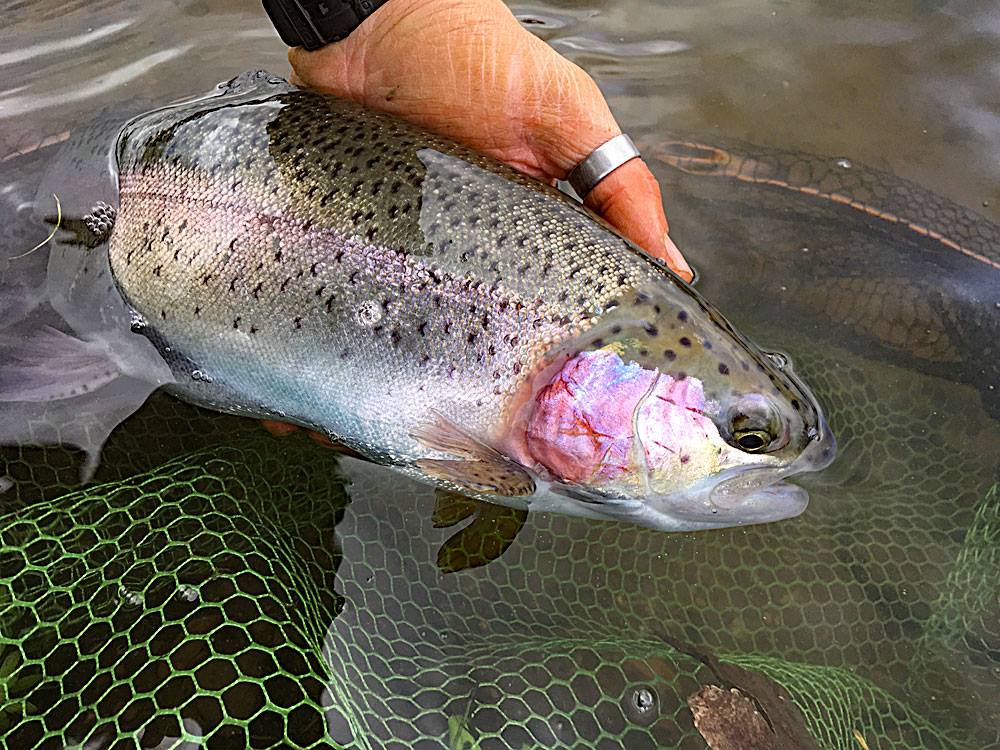The Roadford Fly Fair is a very popular event at the Start of Spring coinciding with those first forays to the waters edge in search of wild trout and salmon.
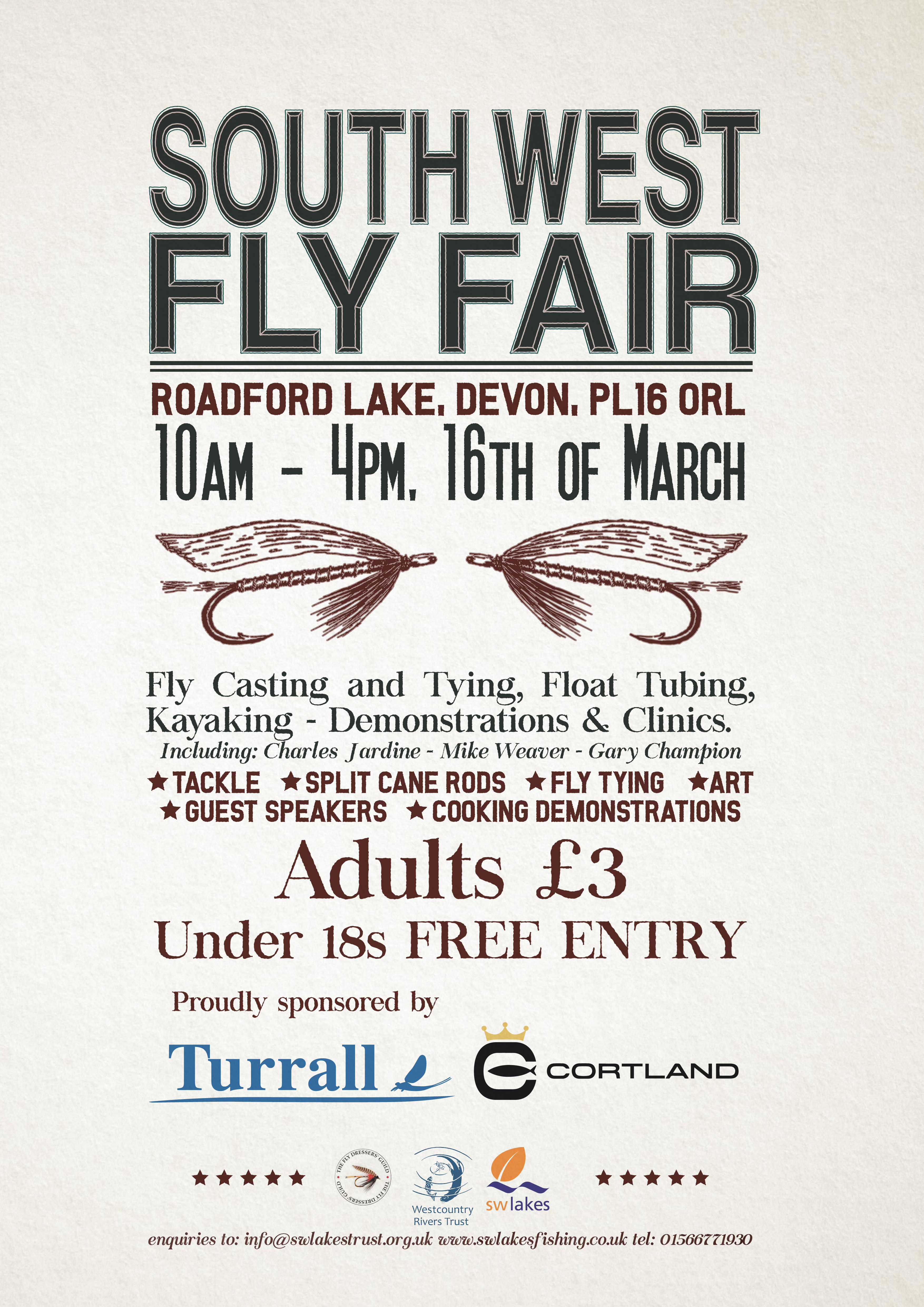
On a cold winters day rainbow trout can provide some exciting sport! With only a month to go until the start of the salmon season why not get a bit of casting practice in, an appetiser for the main course ahead…
Some very nice, hard fighting Rainbows coming out at the moment, all methods are taking fish but surprisingly they are still up in the top couple of feet so floating lines still working, but bigger flies and lures seem favourite, like the black or viva woolly bugger…
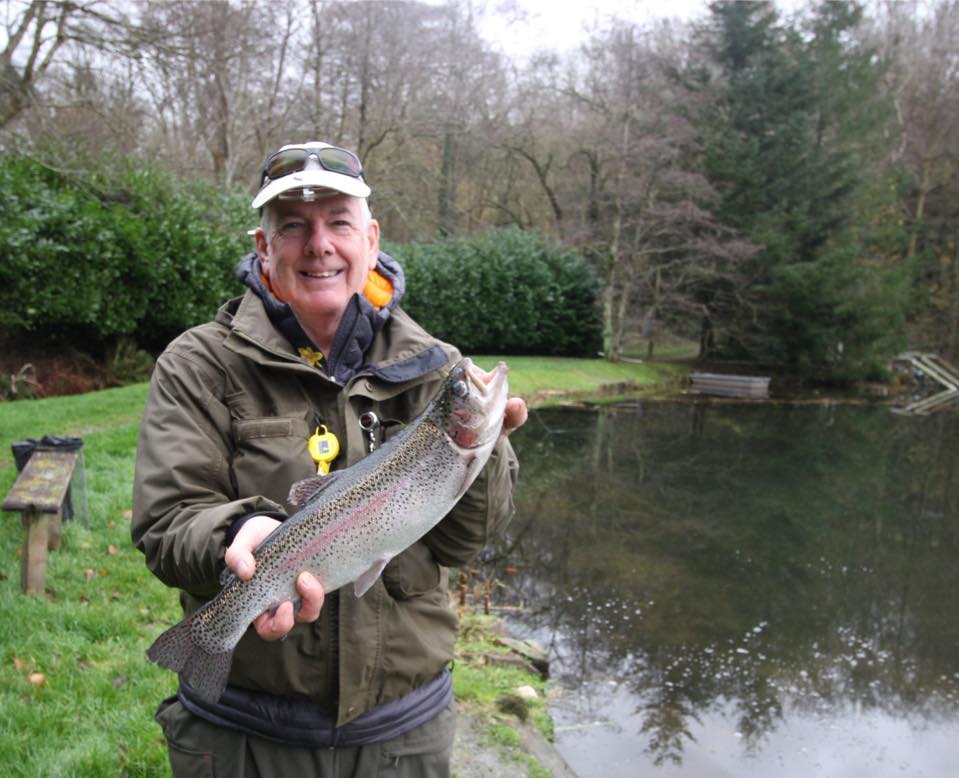
Well done to Ben Cheeld who fished at Exe Valley today. Ben is the first angler on our Winter Permit Special Offer to receive his free permit.
We now have a date for the Exe Valley Fishery Troutmasters Competition which is Sunday 14th April 2019.
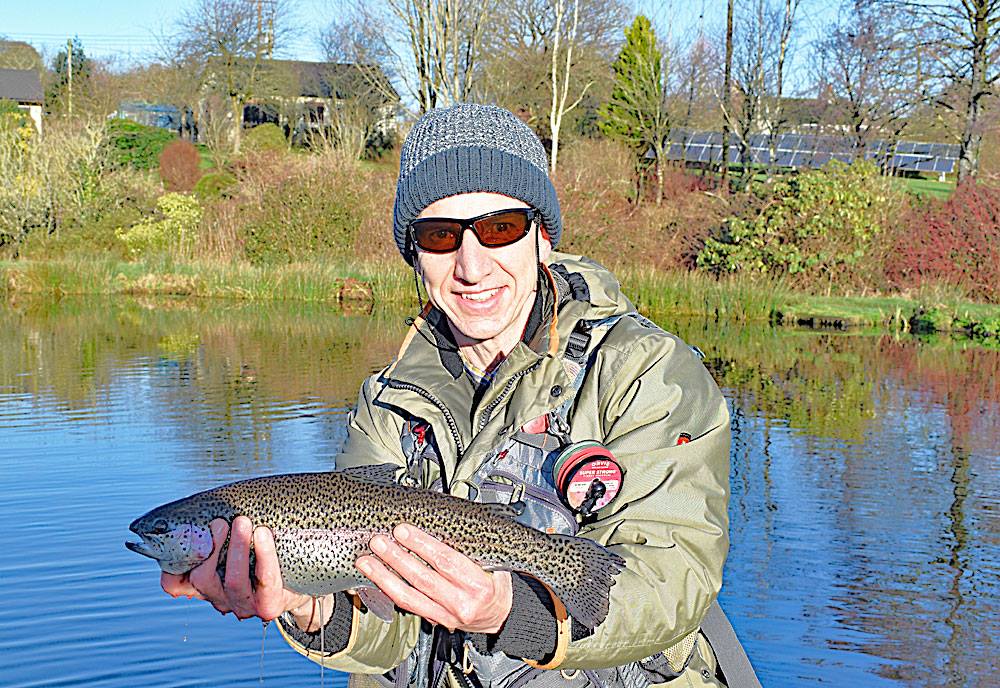
It is hard to believe that we are over halfway through January already. Even with the colder wintery weather it has been lovely to welcome so many anglers both regular visitors and some that haven’t fished since early 2018. We have also announced the date for the Troutmasters competition (more information below).
Anchor Lake Tactics
With the weather being a bit cooler this week the fish have been sitting a little deeper at around 5 foot however on Thursday the sun warmed the lake quickly and by mid-morning the fish were happily cruising just below the surface. Most people are continuing to use floating lines although with the cold spell forecast it may be worth using an intermediate line.
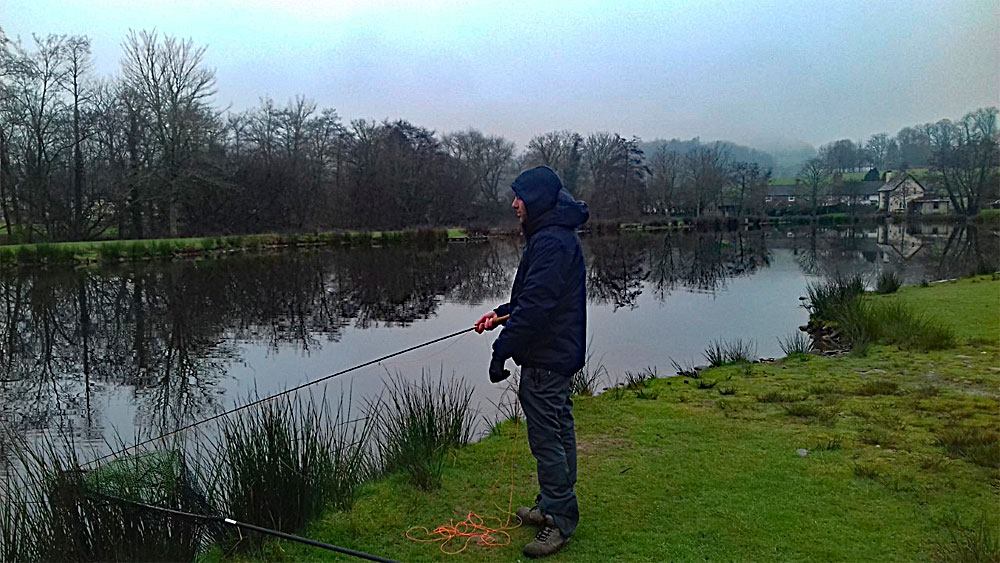
Popular flies this week have been Orange Blob & Damsel patterns, but by far the most successful again this week have been Bloodworm patterns. Jonathan Moore from Exeter hasn’t fished at Exe Valley Fishery for over 6 months but took full advantage of the very popular Catch & Release ticket and caught all six of his fish on Bloodworm patterns. Also caught on a Bloodworm was a 9lb Rainbow Trout weighed in by Simon Metters from Exeter.
Anchor Lake has started 2019 in glorious style with more beautiful sun rises and producing some stunning fish. John Gilmore from Willand caught five cracking fish and also released four fish with his heaviest fish weighing in at around 6 1/2 lbs. John said ‘Great day again Sue. Very good quality and hard fighting fish’. John was joined by four other anglers and between them had 26 fish making an average of over 5 fish per person.
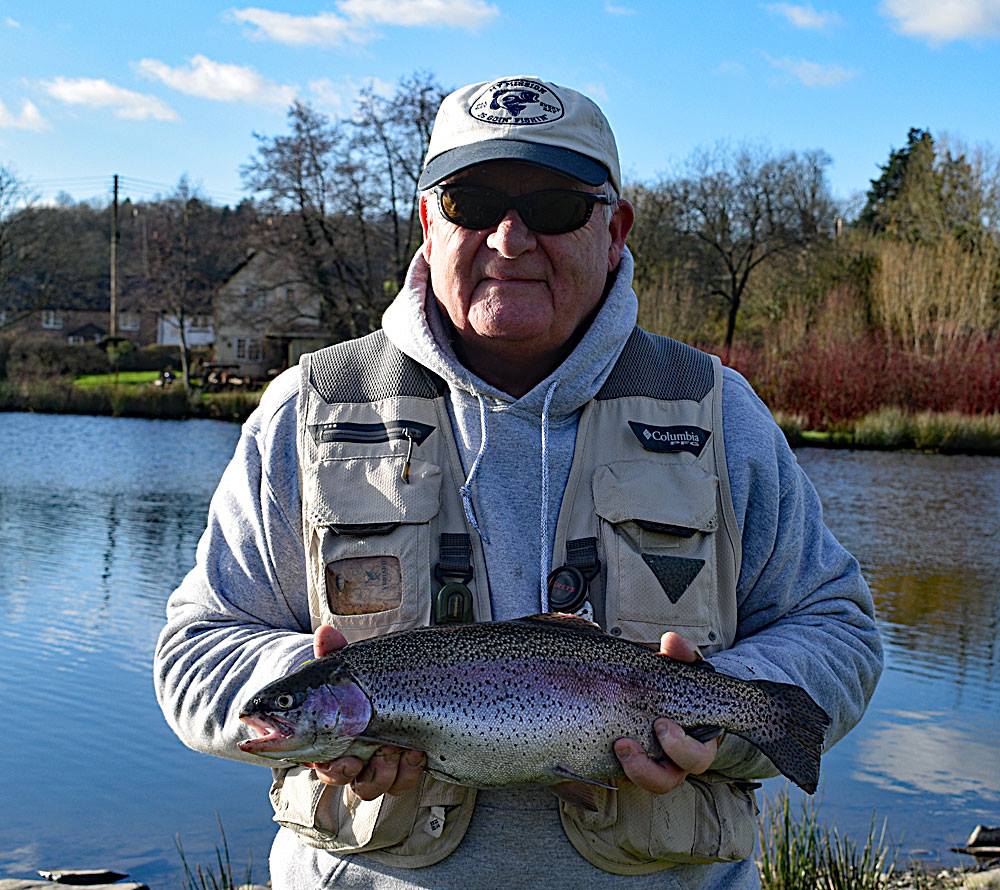
Ben Cheeld has continued his success. On his recent visit he caught 8 fish up to 7lb and is currently on his third permit on the new permit offer (more details below).
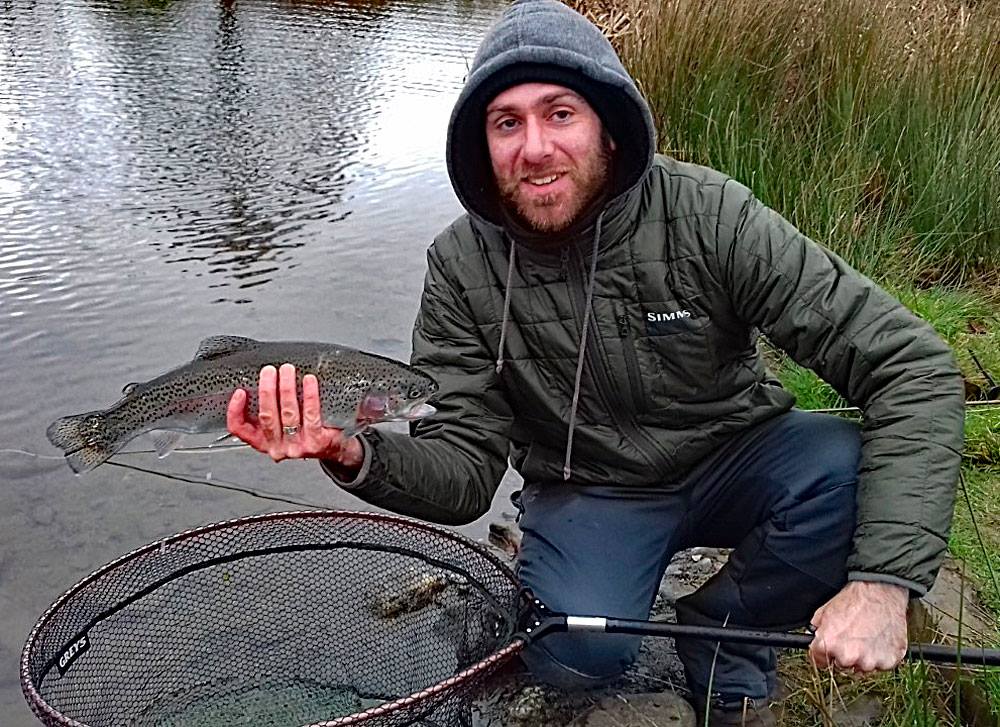
Winter Permit Offer
We have been thrilled by the number of anglers taking up the Winter Permit Offer and are keen to see which angler earns the first free permit. Full details below.
WINTER PERMIT OFFER – Buy 4 permits and have your 5th outing on us!
Don’t forget our Winter Permit Offer starts on the 27th December 2018
We are pleased to be able to announce a Winter Fishing Permit Offer *(subject to T&Cs) to those of you who would like to support the fishery when the fishing is great … but the weather isn’t the most pleasant!
From Thursday 27th December 2018 to Sunday 31st March 2019 inclusive BUY 4 PERMITS & GET THE 5th PERMIT – FREE!!! You are free to choose whatever 5th permit you like … the deal is you must visit and pay for 4 full price permits within the allotted time published above, that’s it!
* Terms & Conditions 1) Pre-paid gift voucher permits DO NOT qualify for this offer. 2) All permits MUST be completed in full to register as a visit. 3) Return slips MUST be completed at the end of each session to register as a visit. 4) A permit purchased and not matched to a return slip will not be counted. 5) ONE FREE PERMIT of the anglers choice (C&R, 2, 3, 4 or 5 fish) will be issued after 4 full price visits subject to the T&Cs 6) The FREE permit will be valid for one visit only which must be taken by 30th April 2019 7) This offer can be enjoyed more than once between 27/12/18 & 31/03/19 – e.g. Fish 8 times and receive 2 FREE PERMITS 8) The FREE permit is non-transferable and has no cash value.
Pre Order Food
I have been asked several times about bacon rolls/food since Christmas and am pleased to say that I am now offering a small pre-order menu through out the winter opening hours. If you are planning a trip to Exe Valley Fishery and would like something from the menu on arrival or during the day then please contact me to organise.
Many thanks for reading this post and I hope to welcome you to the fishery soon. A reminder of our Winter opening times are below.
Sue x
Telephone Enquiries: 01398 323008
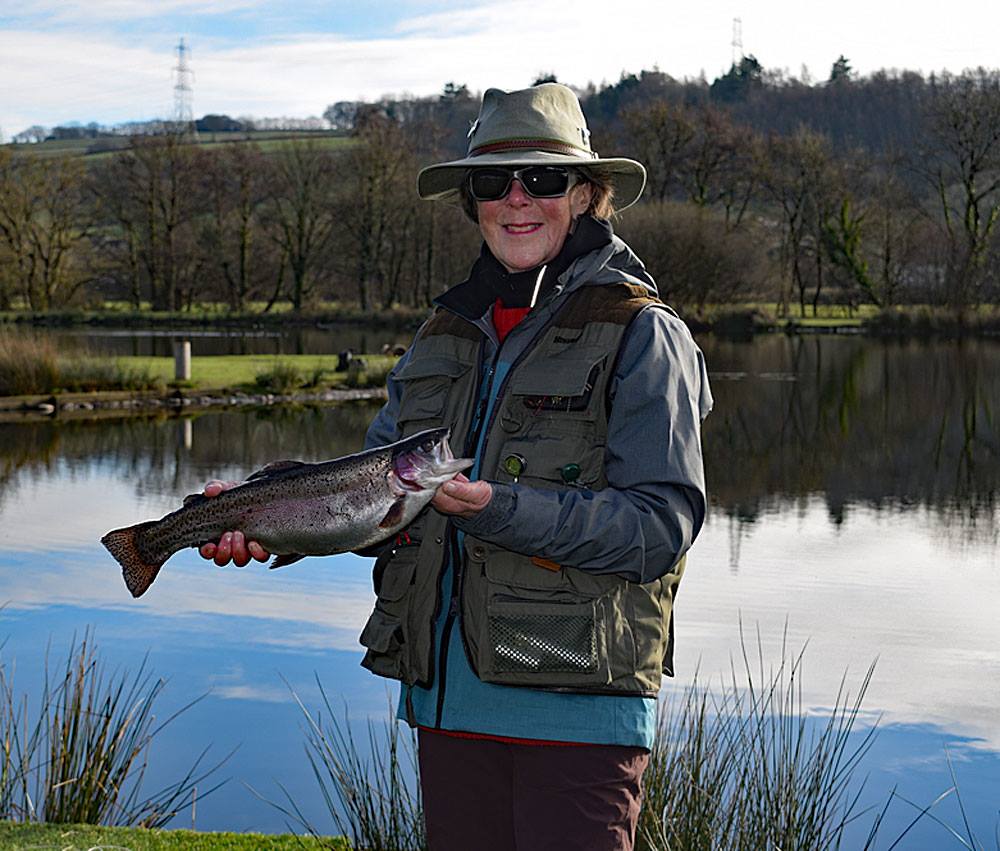
(Above) The ladies didn’t miss out on the action either with Jane Young catching three stunning Rainbow Trout on a Hot Head Cats Whisker with legs.
Lobbs Lake
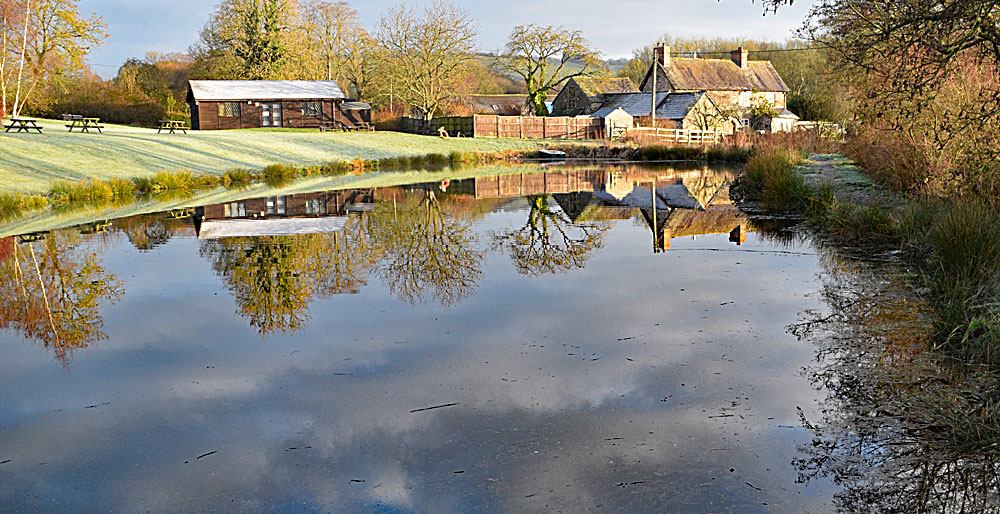
It hasn’t gone unnoticed by some of our regular visitors that Lobbs Lake seems to yo-yo between being empty and then full of water. I promise this isn’t as a result of me changing my mind each day but in fact the maintenance required so that it can become a fishing lake once again. Thanks to Nick and Blair Woodland (and a small amount of rake pulling by myself – there is evidence!) New Years Eve was Lobbs Lake clearance day with an extraordinary amount of weed removed. The pictures of the lake transforming through the day are incredible. Lobbs Lake is now refilled and ready for its relaunch in the Spring.
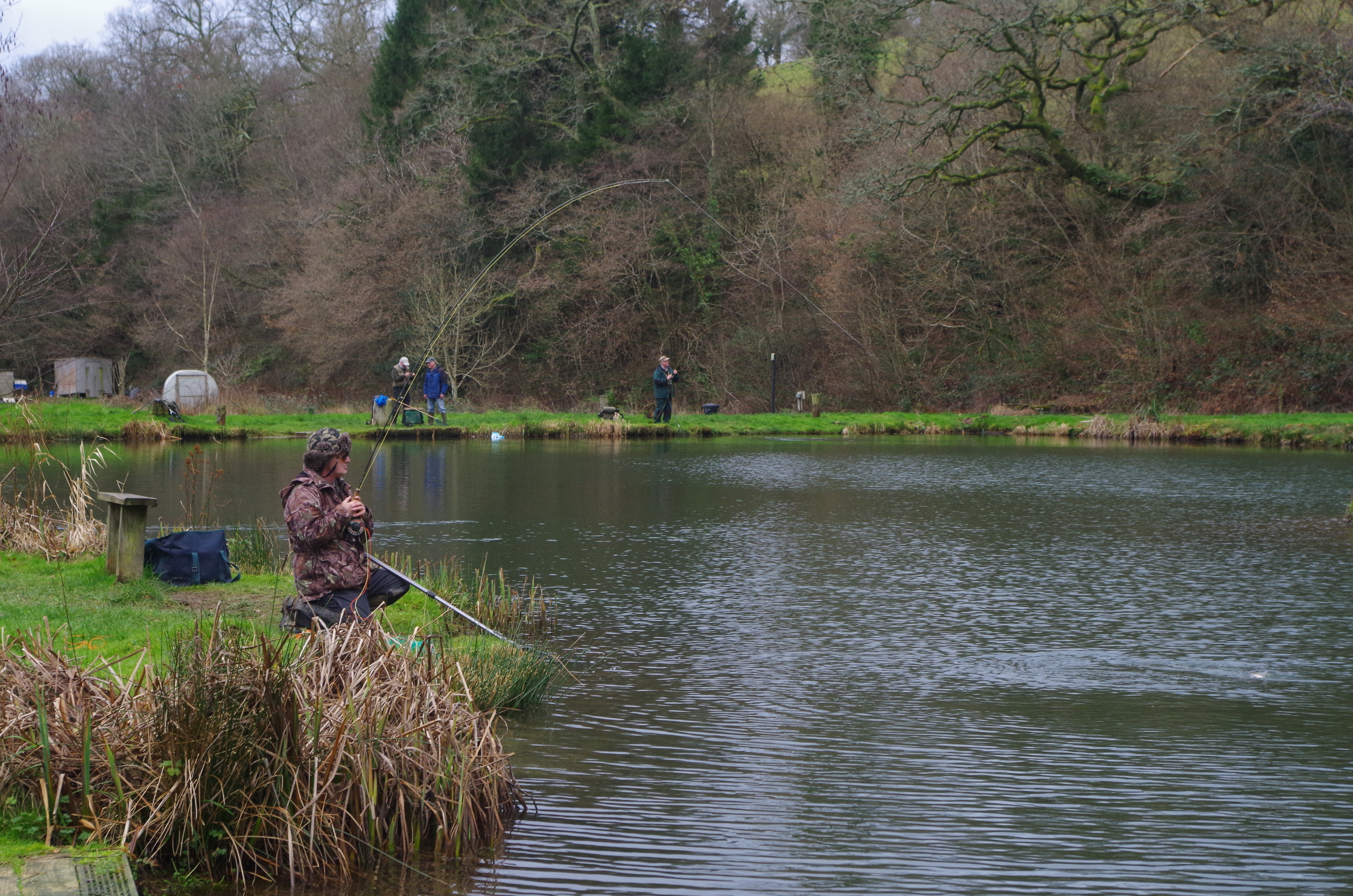
Wistlandpound Fly Fishing Club visited Bratton Water for the second leg of their Winter Challenge Series. Members found the lake in fine form with a variety of flies tempting the hard fighting trout in the clear water. Club secretary Dave Richards won the competition with three fish for 8lb 2oz. In runner up spot was Nigel Bird with three for 7lb 6oz with Paul Grisley and david Eldred equal third with three for 7lb 5oz.
Andre Muxworthy three for 7lb 3oz, Colin Combes three for 7lb 2.5oz, Dave Mock three for 6lb 6oz and Wayne Thomas three for 5lb 7oz.
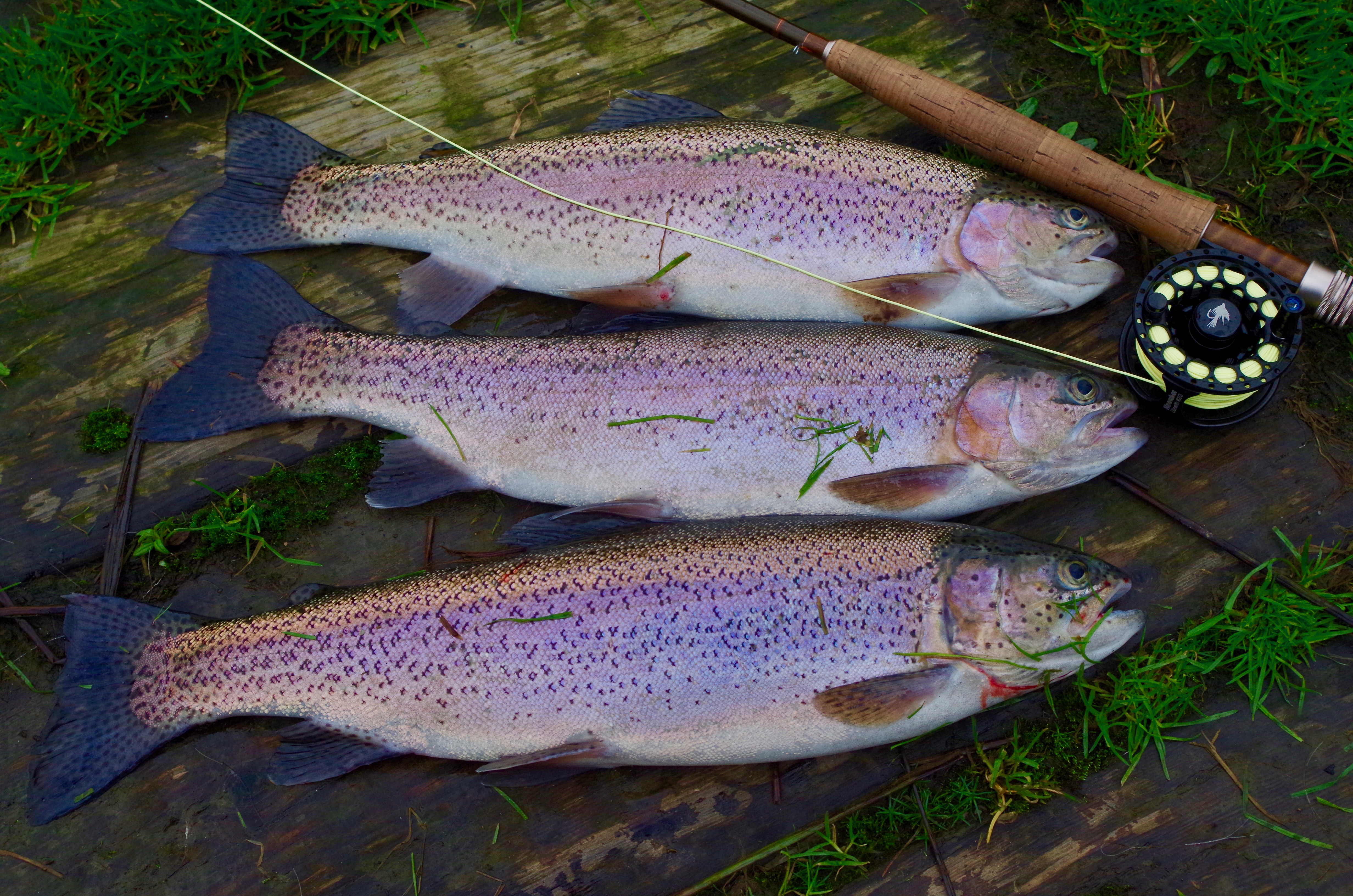
Whilst large flies and lures can work well at Bratton I personally prefer an approach with a little more finesse when fishing this picturesque water nestled in a peaceful Valley beside the Bratton Stream. Arriving at the fishery I selected a small gold-head PTN for the point and a small black buzzer on the dropper. Casting out across the lake I allowed the fly to sink for a few seconds before beginning a slow retrieve just keeping the line tight as it drifts in the breeze. The tip of the line was studied carefully and after a couple of casts it was pleasing to set the hook with a quick draw on the line with the left hand. I caught my three fish bag within an hour of starting as did virtually all fellow members. It must be very difficult to get the stocking balance right on these small stillwaters. Anglers vary greatly in angling ability and the trout fluctuate greatly in their willingness to feed. Combine the anglers ability, the vast variation in the British weather with the vagaries of the trout and you have a recipe that seldom suits all tastes. Too many fish and angler catches his fish too quickly, too few fish and anglers will grumble that they cannot catch. Generally Bratton Waters stocking policy is spot on as on its day it can offer challenging fishing yet very few days when anglers go home without a fish or five.
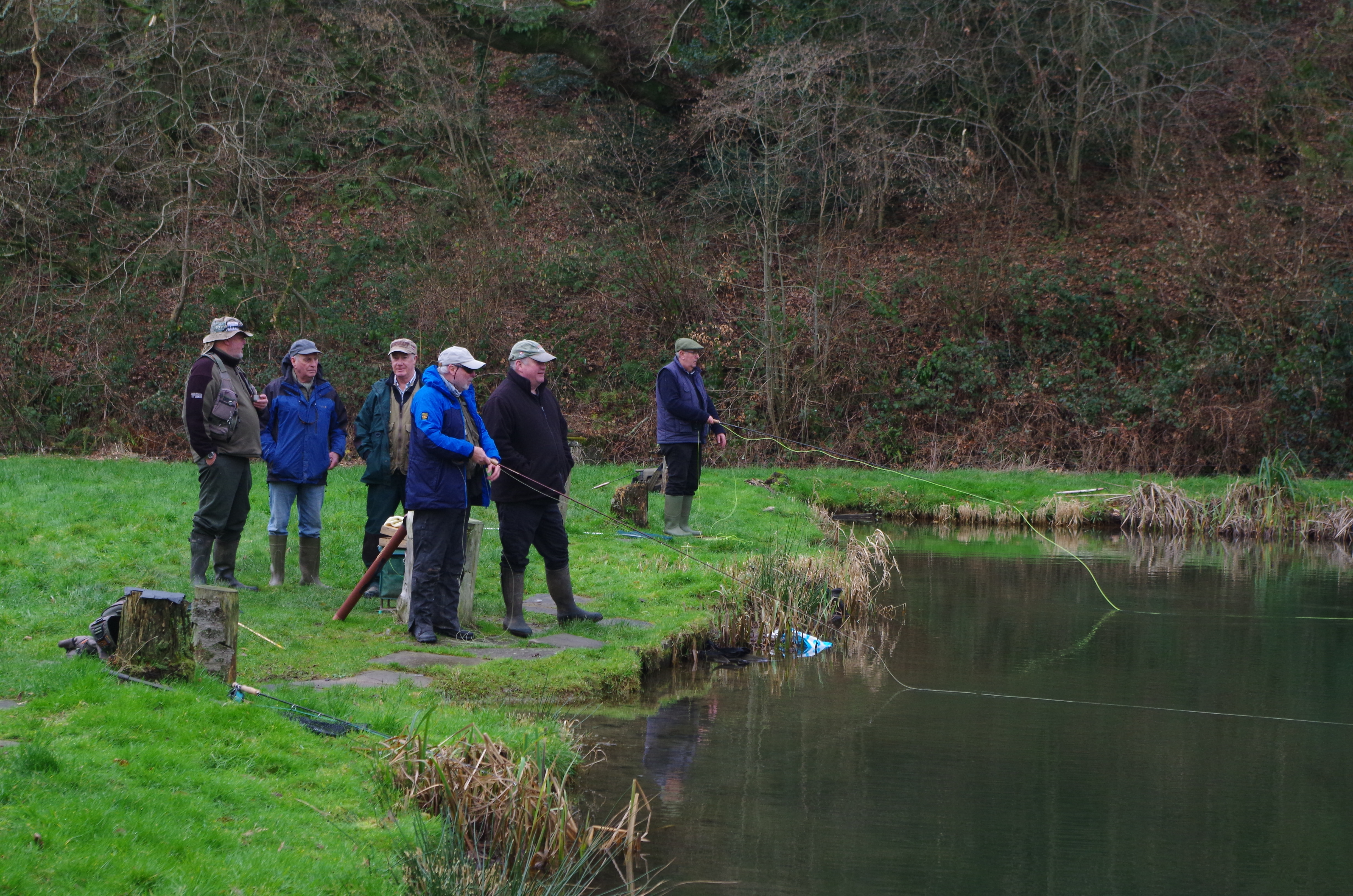
On a cool winters day Wistlandpound Club members enjoy the social aspect of a day by the water. Chatting about fish and life is a big part of the club angling scene and small still-water’s like Bratton are perfect for a Winter morning with members returning to families and home life after a bit of fresh air with a bag full of trout each for tomorrow nights tea.
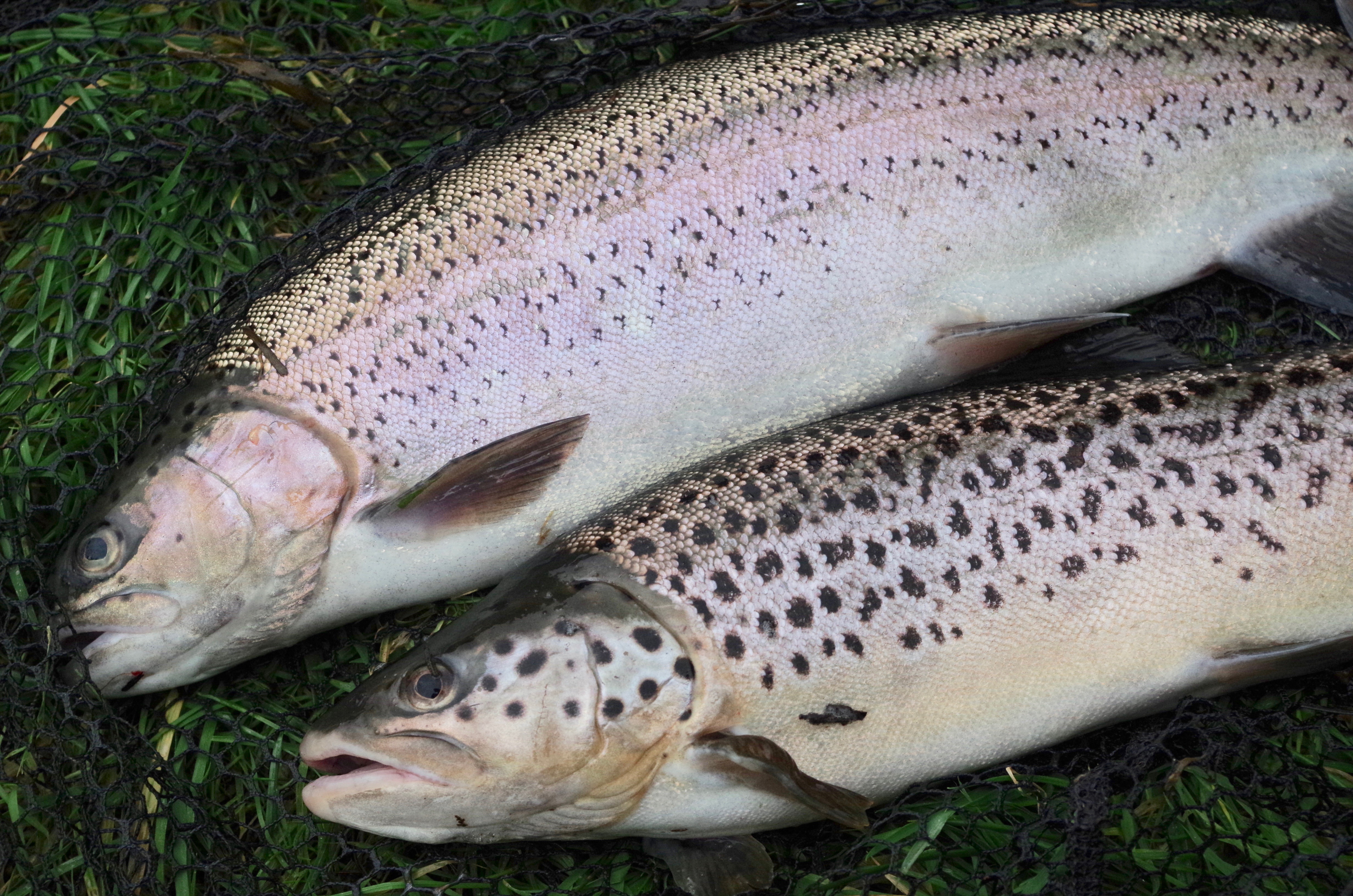
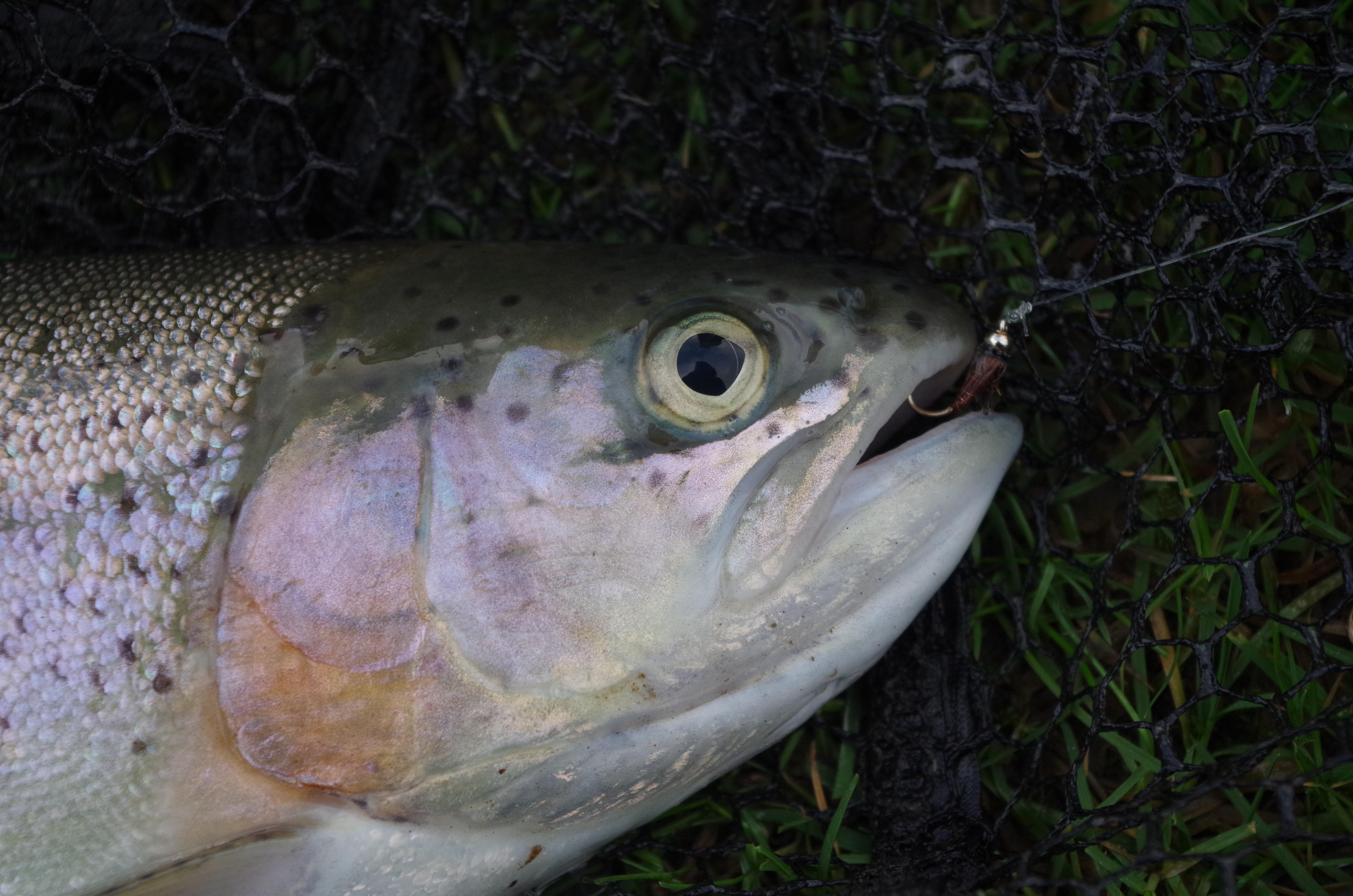
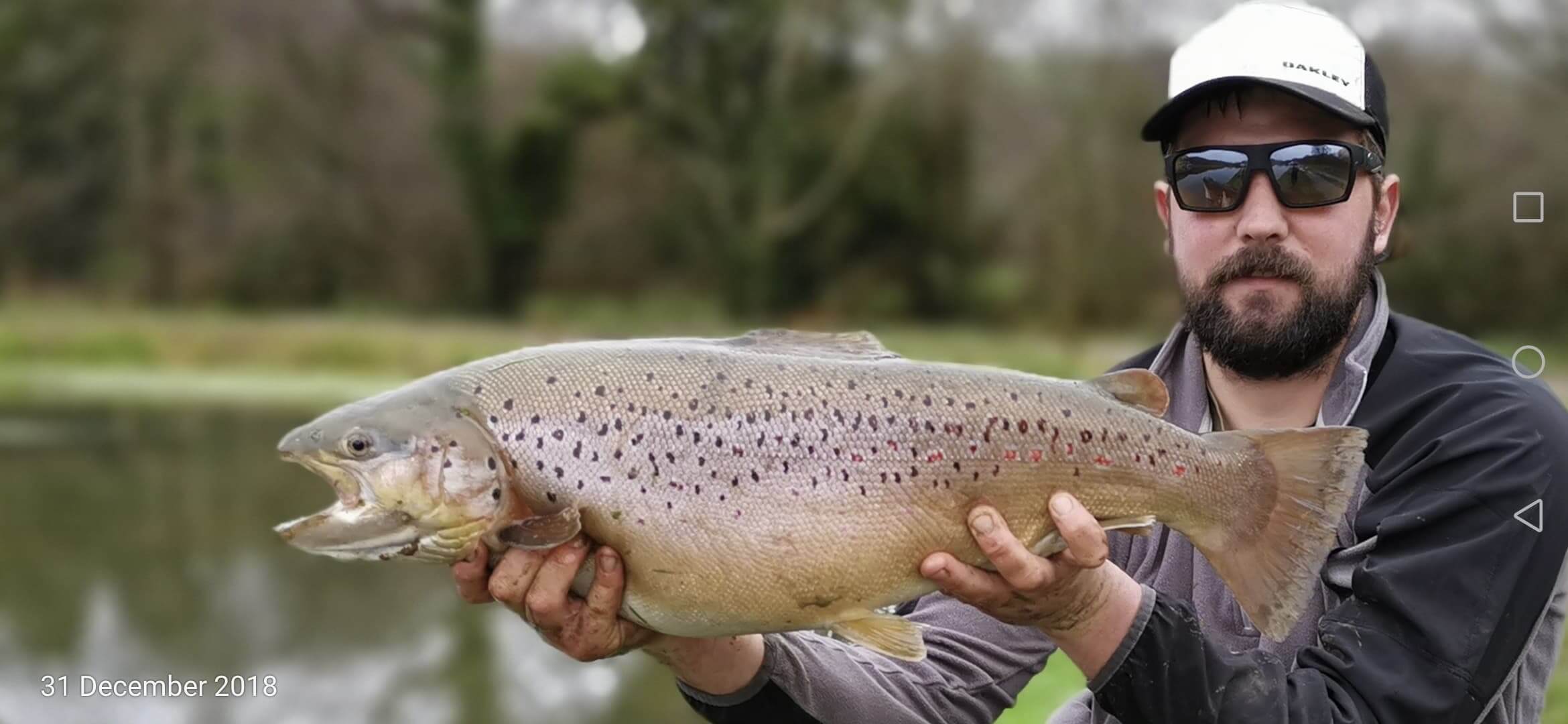
Dan Spearman ended 2018 in style landing his first double figure brown trout on New Years Eve after many years trying and coming close on several occasions with browns to over 9lb. Fishing at Bulldog Fisherys catch and release specimen trout lake with his young son Rex they enjoyed qaulity fishing landing several trout including Dan’s double figure brown.
Bulldog s owner Nigel Early can be contacted on 447767492800 A catch and release ticket is £20.00.
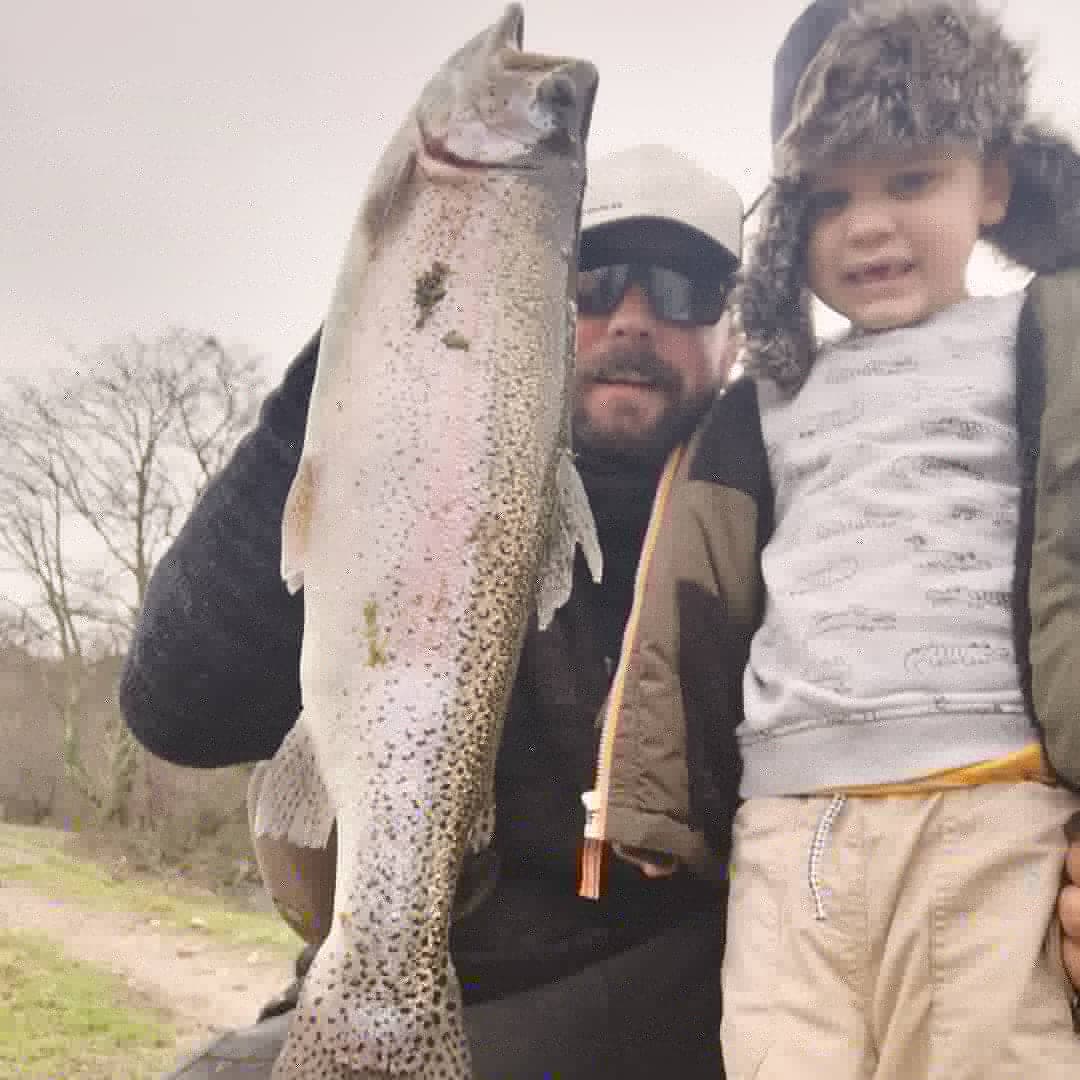
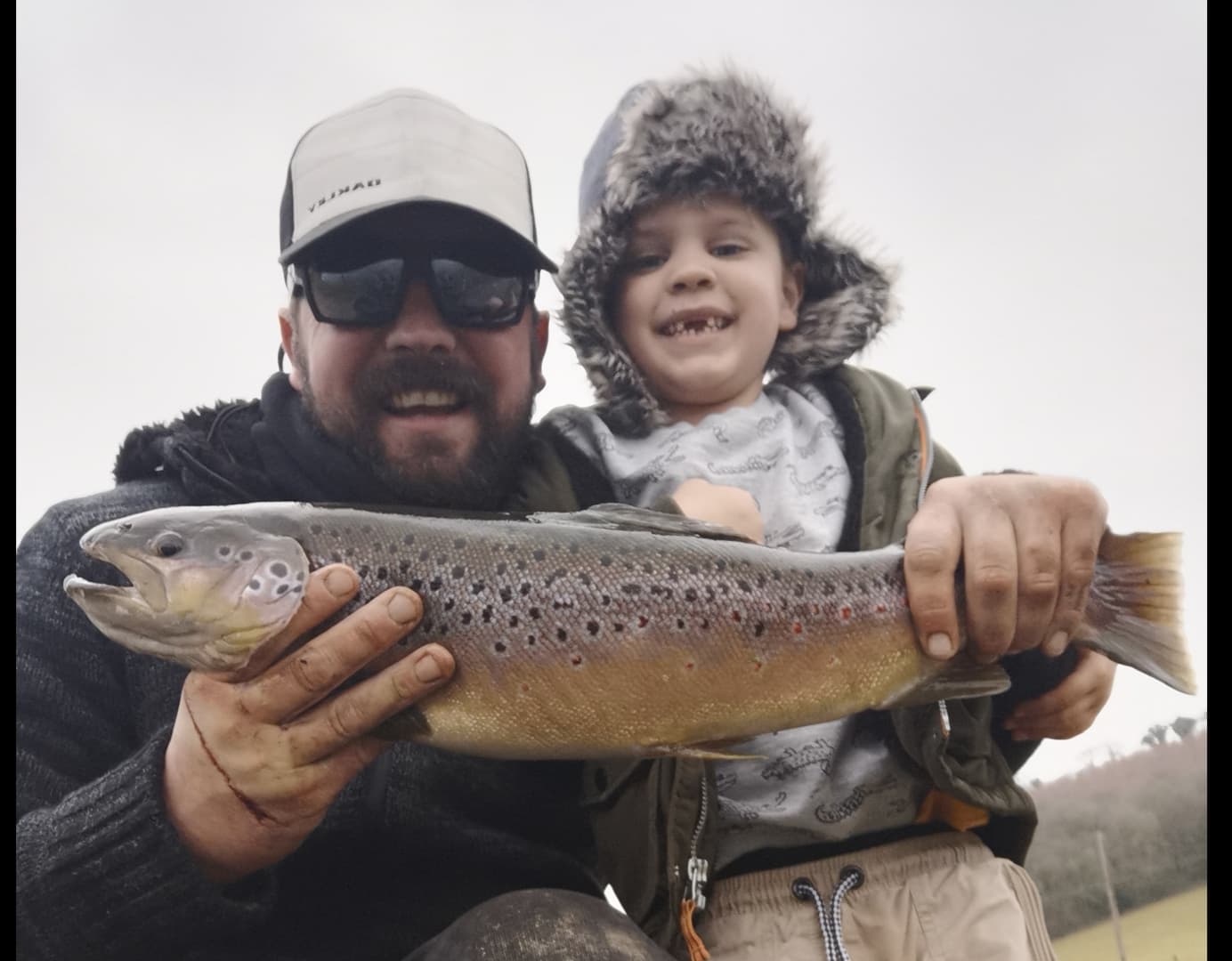
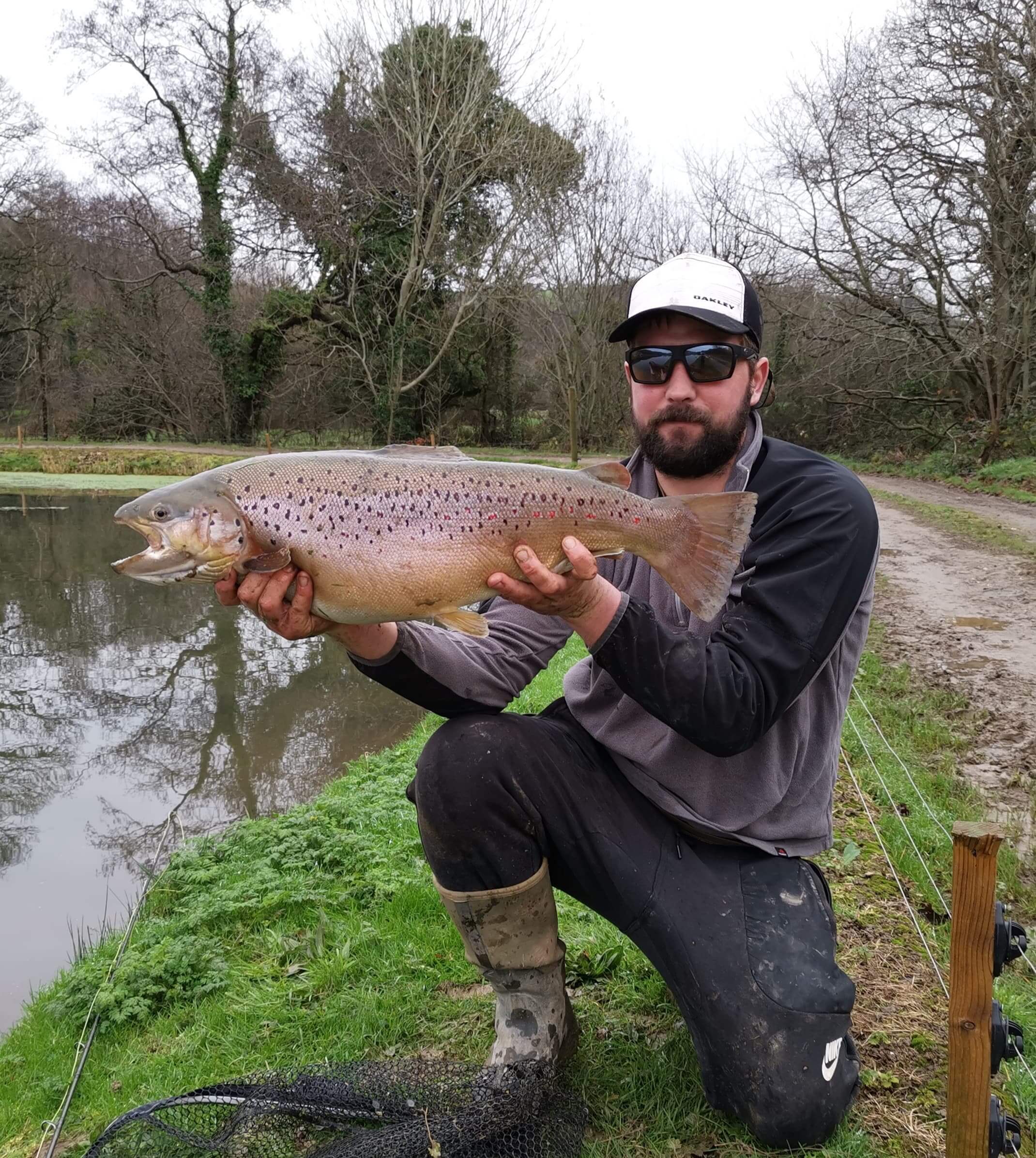
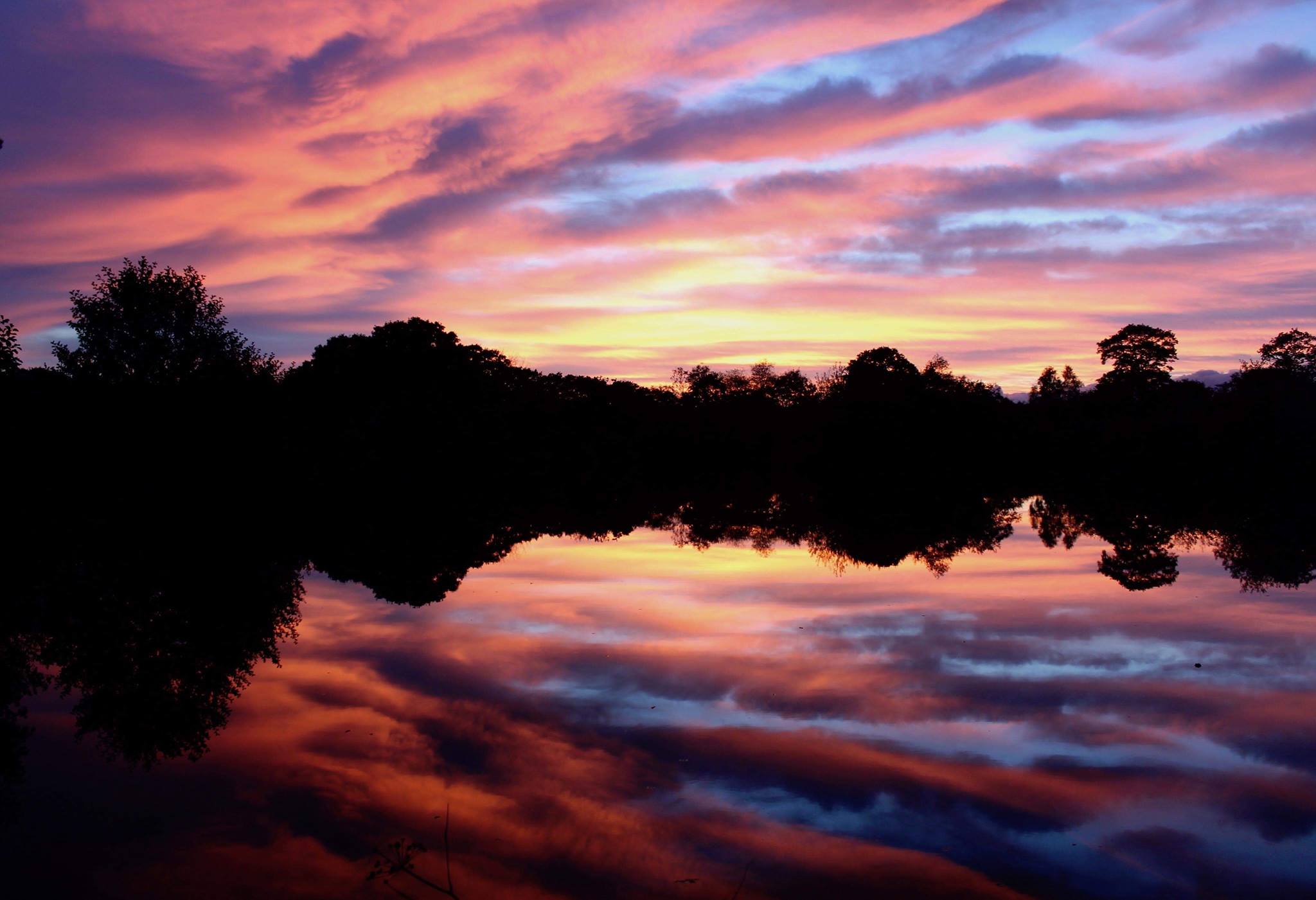
Happy New Year to all readers of North Devon Angling News many thanks to all who have provided me with new reports and images throughout the year. I was going to do a full review of 2018 but then news came in and I thought its all there on the site to see anyway. Looking back it was a good year if you were a flexible angler targeting the vast range of species available. I reported on big shark off Ilfracombe, big nets of silver fish, fifty pound plus carp and humble flounder. I intend to carry on doing the same next year. The weather will of course play its part each season so lets hope we get a fair mix in 2019. No beasts and no droughts but if we do then just make the best of whats on offer. A special thanks to my sponsors below:-

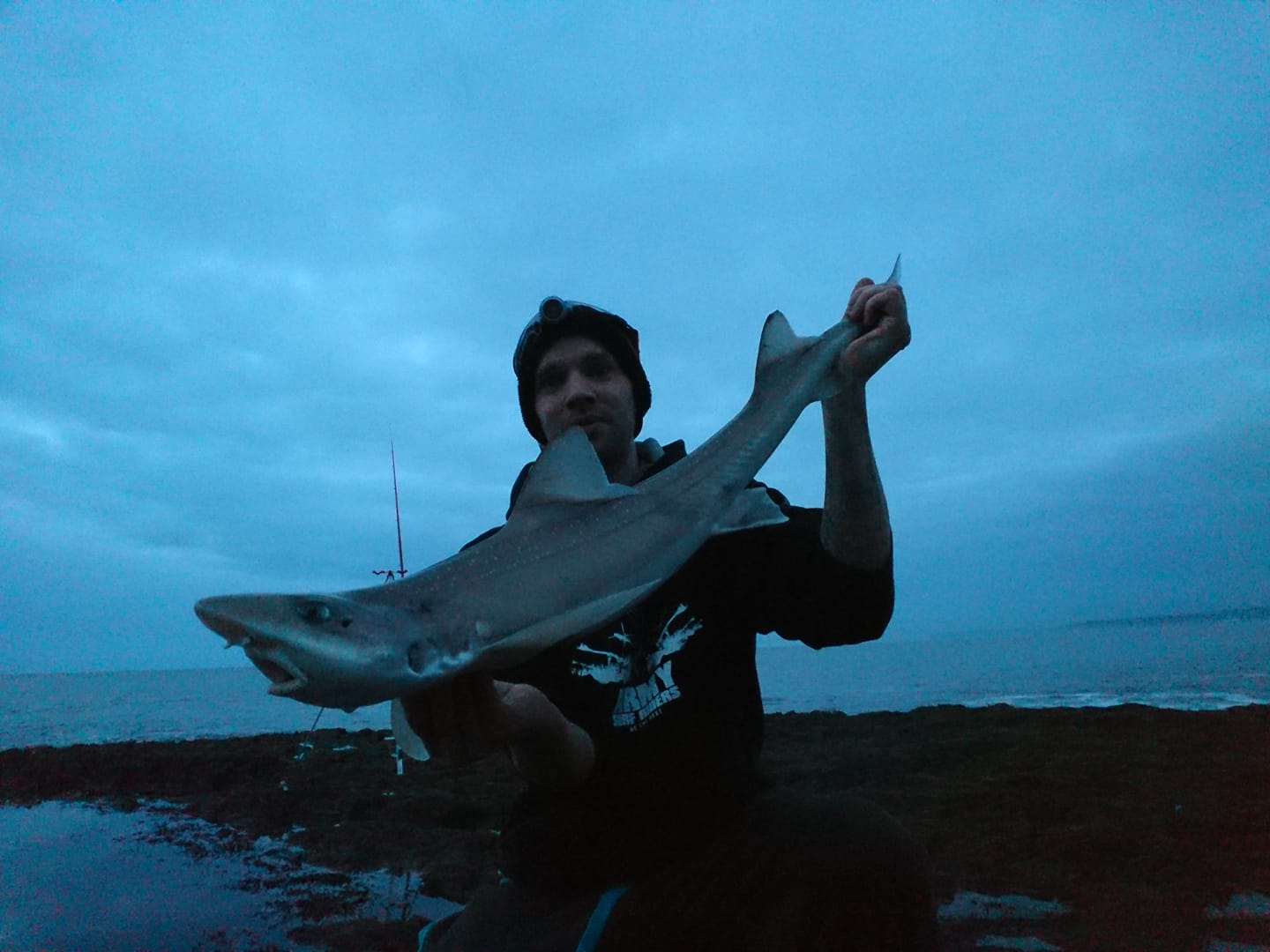
Kyle Blackmore took advantage of the quiet shores on Christmas Day to tempt this smoothound. Not a large specimen but a thought provoking fish at this time of year. Catching fish outside of their recognised seasons has always happened but my gut feeling is that it is happening far more these days. There are many factors that impact upon fish and fish migration climate is just one of these and as anglers we play our game on natures chess board casting our lines into ever changing waters.
At Christmas and the New Year we often indulge in looking back and forth in time and social media has introduced an instant world that undoubtedly has its up and down sides. It is a fact that social media reflects good and bad in people so rather than condemn it as the new evil best to accept it as it is; taking the good with the bad as we always have in life.
On North Devon Angling News I try to report in a positive way to promote angling and the enjoyment of angling. I started the website back in 2016 when I saw that traditional papers were in decline ( The North Devon Journal stopped rewarding their angling columnist), I still write the column in the Journal because I want angling to have its place in North Devon News but feel that most people get their news on line these days. I hope readers enjoy what I try to do on this site and I welcome any features on local angling that you may be inspired to write. Please keep sending the news and images I do not reveal marks unless they are large easy access ones as I know this is a contentious area for sea anglers.
Fish conservation and habitat are all factors that impact upon anglers and I try to promote good practice within my pages on this site. In many instances anglers are at the forefront of conservation efforts espeicially on our rivers with grace concerns regarding salmon and sea trout stocks.
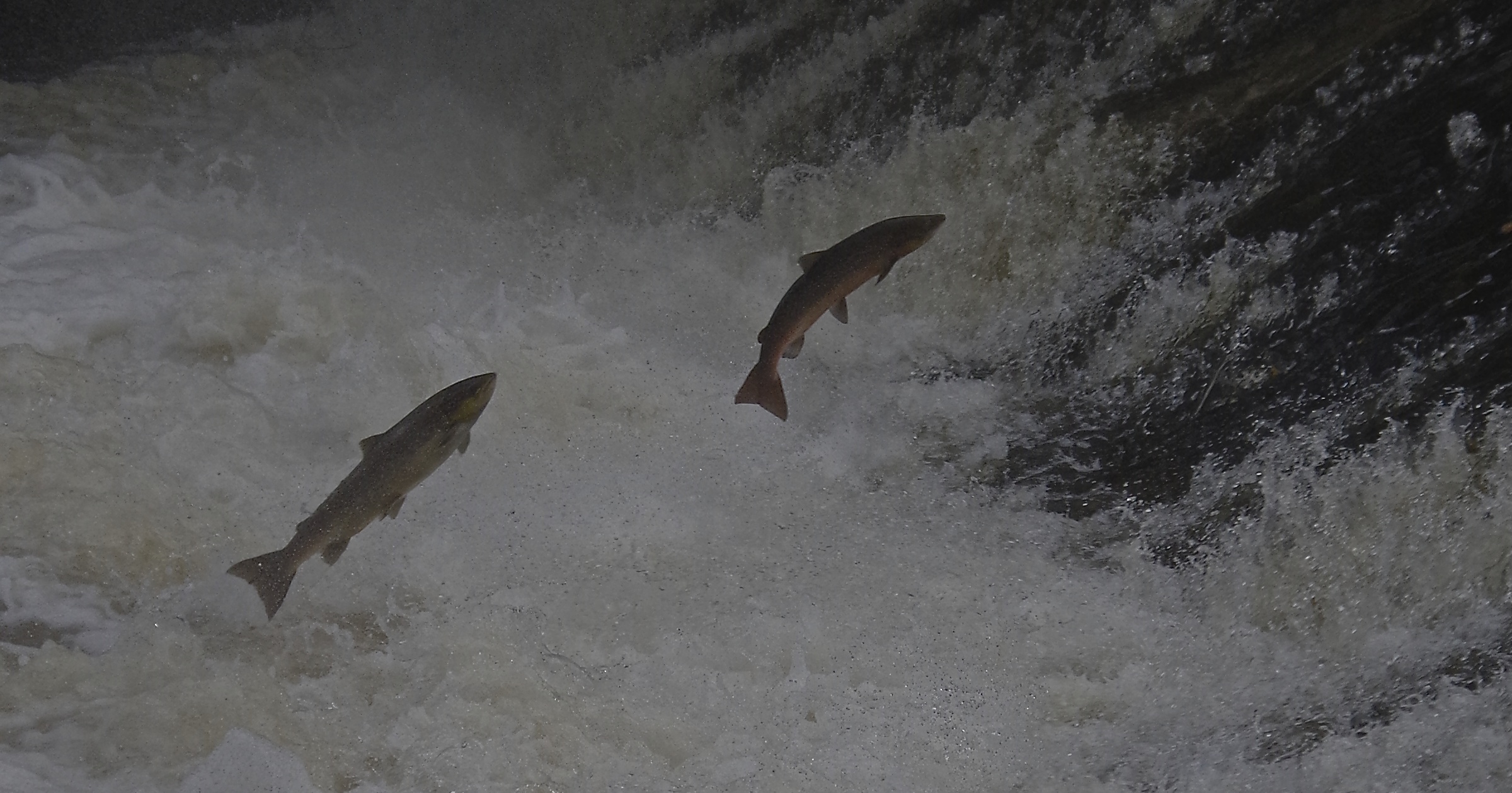
As I type this a latest report has just come in from Ian Laird ( Below) who landed this 9lb 8oz bull huss from a North Devon Rock Mark. One observation on recent months is that I am getting good numbers of qaulity pictures from anglers fishing the shore line during day light hours. I have fished plenty of after dark sessions to be plaged by small dogfish and strap eels.
If you would like to advertise/sponsor North Devon Angling News please get in touch. I try to give good value to all my sponsors. In the next few weeks my Intention is to add a few new features to the site giving more information on venues and whats on offer to anglers visiting North Devon.
Exe Valley Fishery is fishing well in this mild December weather with catch and release options ensuring anglers get the opportunity to enjoy superb value. Throughout the year the trout can be tempted using small immitative patterns the fact that the trout are sometimes slightly more discerning could well be because of tne catch and release policy. One of the joys of these small still waters is that they allow anglers of all ages to enjoy time beside the water as in the case of 81 year old Jim Hattin pictured further diown the page.
WINTER PERMIT OFFER – Buy 4 permits and have your 5th outing on Exe valley!
Don’t forget our Winter Permit Offer starts on the 27th December 2018
We are pleased to be able to announce a Winter Fishing Permit Offer *(subject to T&Cs) to those of you who would like to support the fishery when the fishing is great … but the weather isn’t the most pleasant!
From Thursday 27th December 2018 to Sunday 31st March 2019 inclusive BUY 4 PERMITS & GET THE 5th PERMIT – FREE!!! You are free to choose whatever 5th permit you like … the deal is you must visit and pay for 4 full price permits within the allotted time published above, that’s it!
* Terms & Conditions 1) Pre-paid gift voucher permits DO NOT qualify for this offer. 2) All permits MUST be completed in full to register as a visit. 3) Return slips MUST be completed at the end of each session to register as a visit. 4) A permit purchased and not matched to a return slip will not be counted. 5) ONE FREE PERMIT of the anglers choice (C&R, 2, 3, 4 or 5 fish) will be issued after 4 full price visits subject to the T&Cs 6) The FREE permit will be valid for one visit only which must be taken by 30th April 2019 7) This offer can be enjoyed more than once between 27/12/18 & 31/03/19 – e.g. Fish 8 times and receive 2 FREE PERMITS 8) The FREE permit is non-transferable and has no cash value.
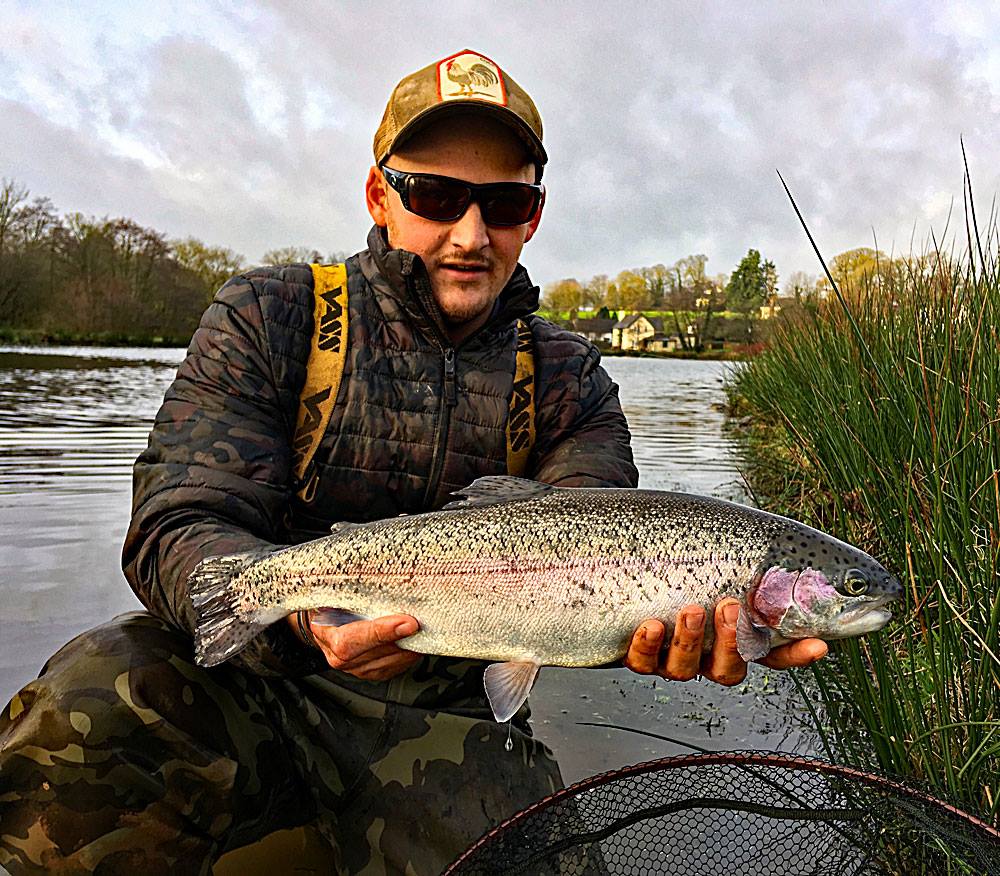
(Above) Blair Woodlland with a cracker taken on Saturday 22nd, December . He and his 3 mates caught and returned 40 fish between them including several on dries!
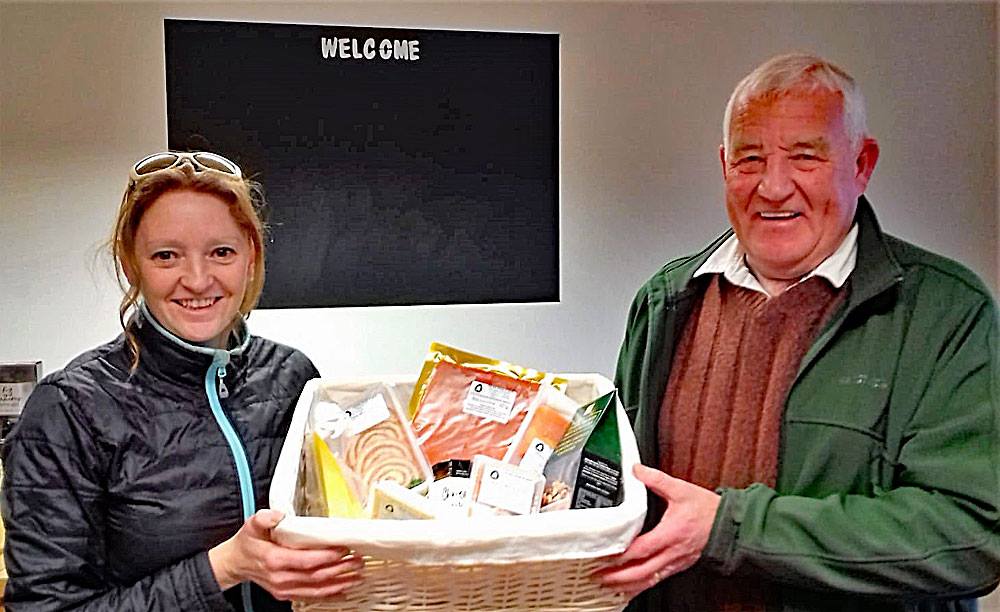
(Right)Steve Edmonds took part in our Christmas prize draw and was first out of the hat, having fished with the South Molton club a couple of weeks ago. He went home with a hamper worth £50. Well done Steve, we hope you enjoy!
(Below) Eighty-one year old Jim Hatim was undergoing surgery just last week and yet a few days later he was enjoying the mild December weather and looking very pleased with these three prime rainbows.
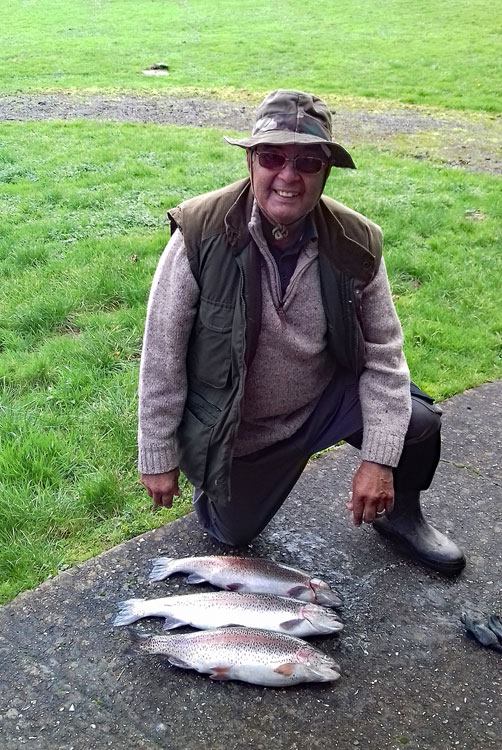
.